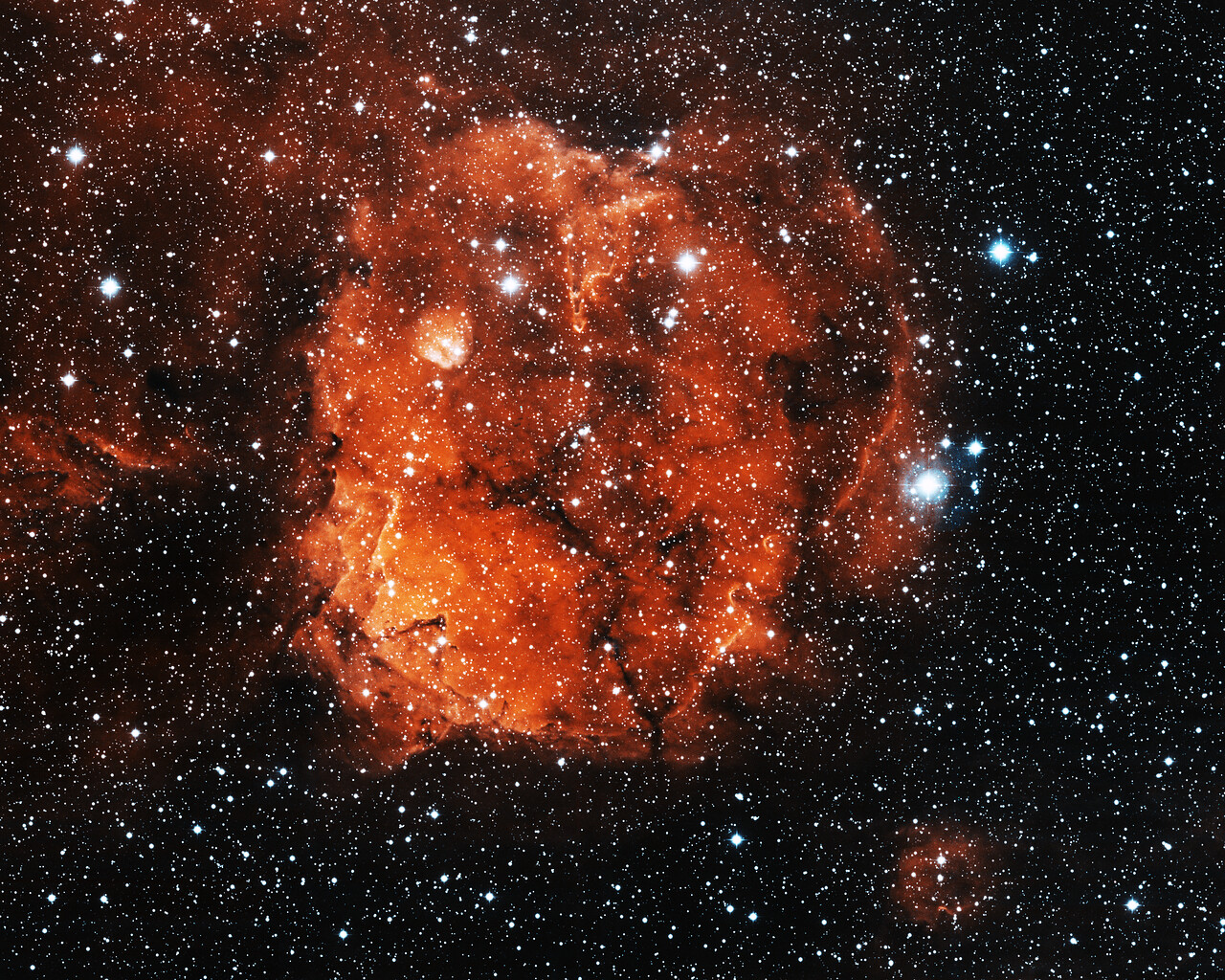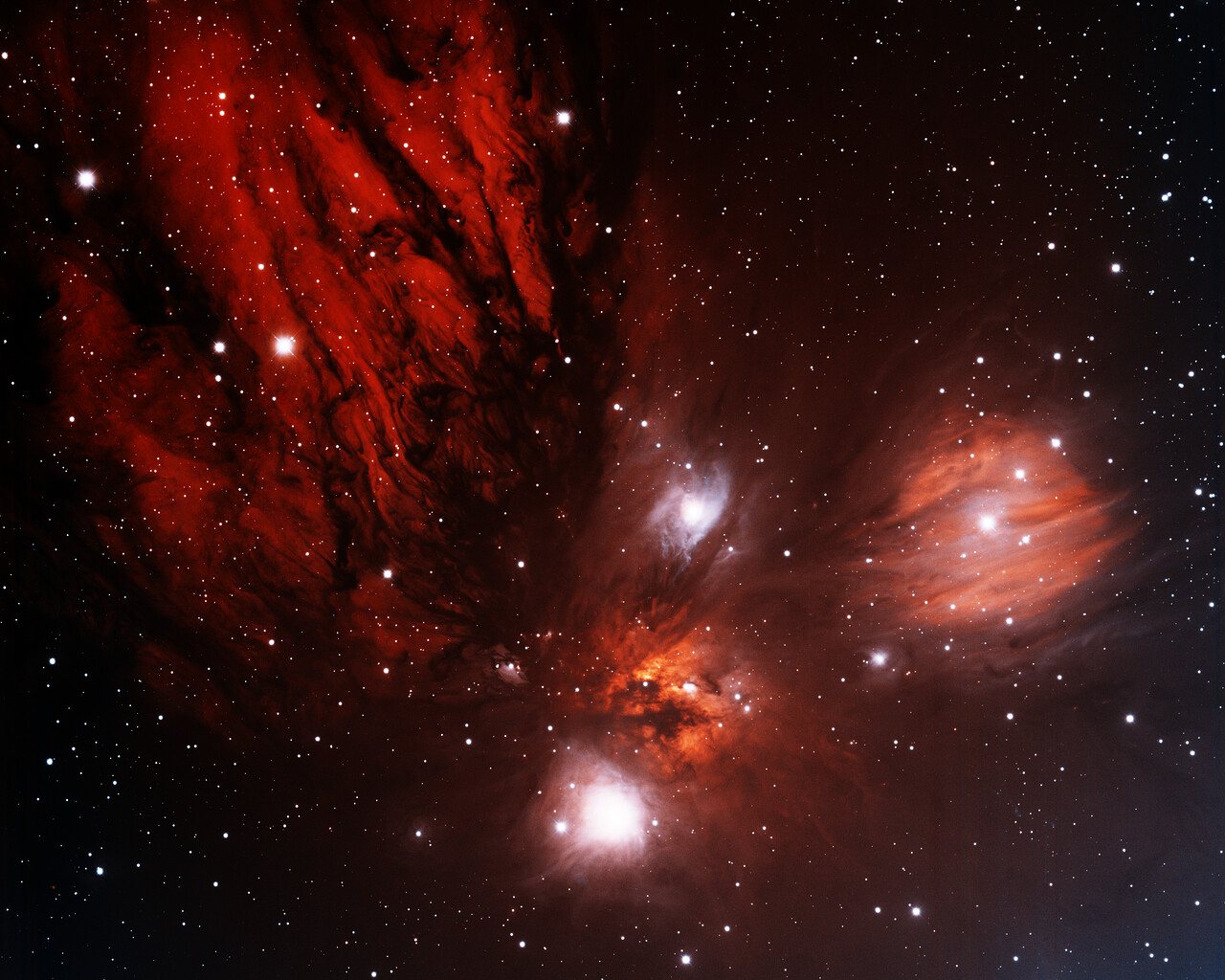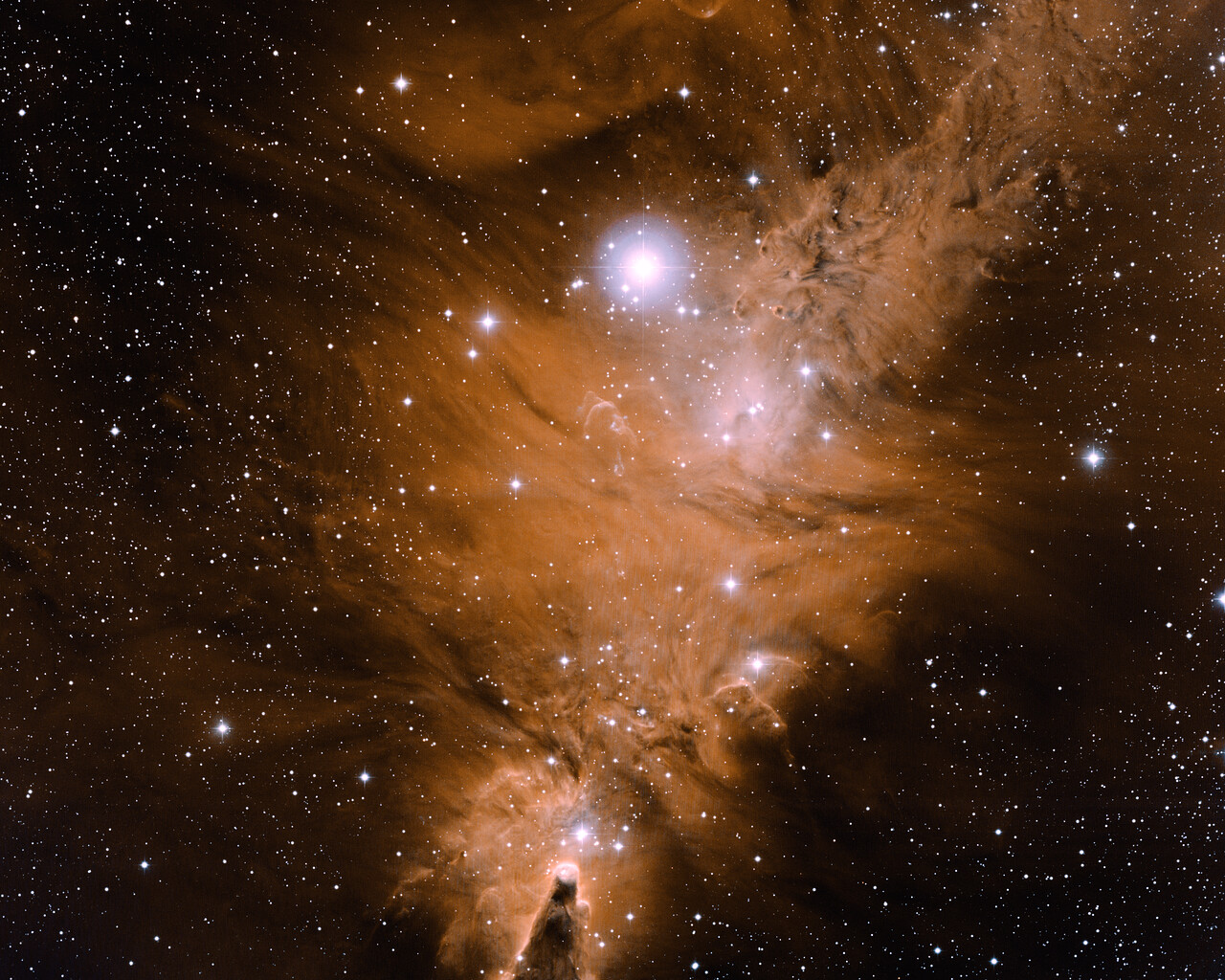Monoceros
Origin
Monoceros is derived from the Greek word for unicorn. It is a faint constellation on the celestial equator. Its definition is attributed to the seventeenth-century Dutch cartographer Petrus Plancius.
Bright Stars
Monoceros contains only a few 4th-magnitude stars, making it difficult to see with the naked eye.


 Photo of the constellation Monoceros produced by NOIRLab in collaboration with Eckhard Slawik, a German astrophotographer.
The annotations are from a standardized set of 88 western IAU constellations and stick figures from Sky & Telescope. Please find here a non-annotated version of the image.
Photo of the constellation Monoceros produced by NOIRLab in collaboration with Eckhard Slawik, a German astrophotographer.
The annotations are from a standardized set of 88 western IAU constellations and stick figures from Sky & Telescope. Please find here a non-annotated version of the image.
Credit: E. Slawik/NOIRLab/NSF/AURA/M. Zamani
Notable Objects
Monoceros has a number of interesting objects, including:
- Messier 50 is a pleasing open cluster shining at magnitude 5.9.
- The Rosette Nebula (NGC 2237) is a magnitude-9.0 planetary nebula and a popular target for astrophotographers.
- The Christmas Tree Cluster (NGC 2264) is a bright, 4th-magnitude open cluster which is embedded in faint nebulosity.
- NGC 2254 is a 9th-magnitude open cluster.
- Hubble's Variable Nebula (NGC 2261) is a 9th-magnitude planetary nebula.






























